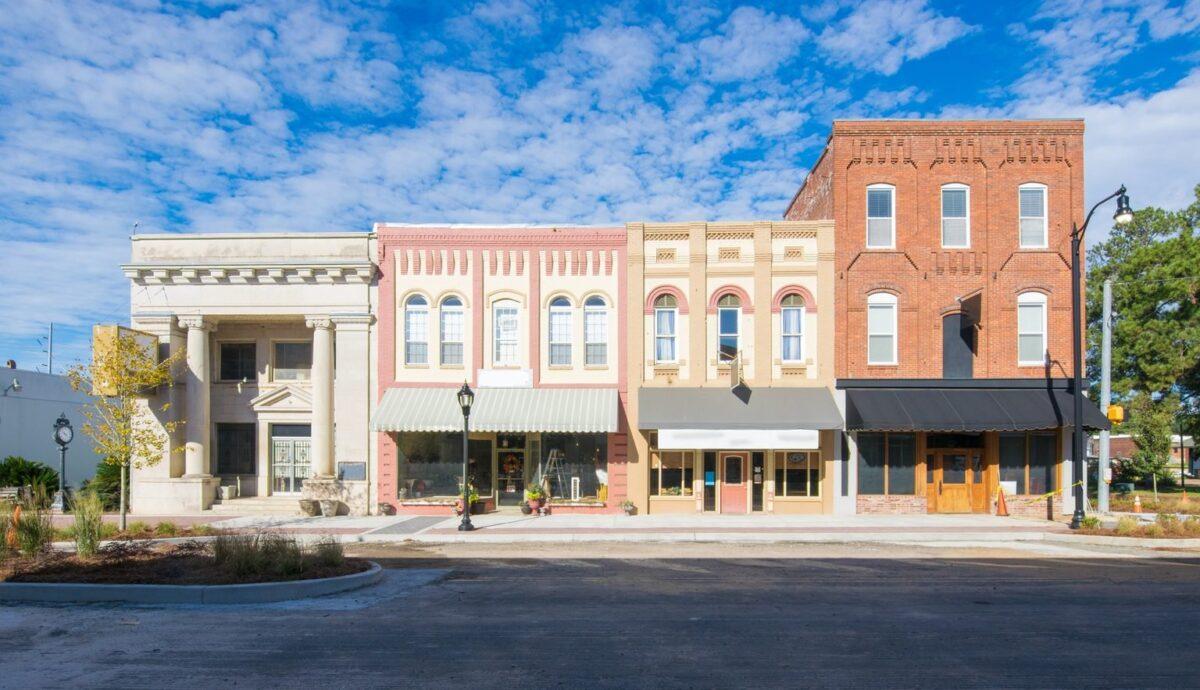The revival of small cities has been a trend in recent years. Many small cities have been revitalized by the restoration of their historic architecture and the development of new buildings that complement their existing architecture. Some of the popular architectural styles that have been used in these revitalization projects include:
- Greek Revival: This style was inspired by Greek architecture and democracy. It is characterized by tall columns, painted plaster exterior, symmetrical shape, horizontal transoms, bold moldings, and embellishments.
- Neoclassical: This style is a revival of Classical architecture during the 18th and early 19th centuries. It is characterized by the logic of entire Classical volumes, unlike Classical revivalism which tended to reuse Classical parts.
- Art Deco: This style is characterized by its use of geometric shapes and bright colors. It was popular during the reign of Queen Victoria in England from 1837 to 1901.
- Pueblo Revival Style: specific to the Southwestern part of the U.S. Pueblo Revival adobe structures are nearly always flat-roofed and often feature wooden beams, which exist purely for aesthetic reasons.
- Territorial Style: This architectural style is characterized by contoured adobe walls, flat roofs, beams, niches, or small arches carved into the walls for displaying objects.
- Classical Style: This style is characterized by an emphasis on the harmonious composition of elements that form a Classical whole, the revival of Baroque and neoclassical styles, and cities laid out geometrically with wide, grand streets.
Here are some examples of small cities that have been revitalized:
- Buffalo, Syracuse, and Utica. These cities in New York have been revitalized by the influx of refugees and immigrants. The new residents have started businesses and brought new life to the cities.
- Lancaster. This city in Pennsylvania has been revitalized by the development of new restaurants, shops, and galleries. The city has also restored its historic architecture.
- Alexandria, Annapolis, and Leesburg. These cities in Virginia have been revitalized by the desire to live within walking distance of restaurants, bars, theaters, and parks.
- New Iberia. This city in Louisiana has been revitalized by its renaissance which has yielded a Great American Main Street Award and a revitalized commercial district featuring spicy hot and Cajun food.
Here are some ways small cities can be revitalized:
- Revitalize the downtown area: Even a town of a few thousand residents has a main street with some major businesses. Repair and refurbish old buildings to make the district more appealing to residents and passersby driving through town. Offer retail stores and restaurants an incentive to move into the area via tax breaks or reduced rent.
- Establish a community foundation: A community foundation can help raise funds for revitalization projects and provide a central point of contact for community members.
- Market the town to prospective residents: Promote the town’s unique features and attractions to attract new residents.
- Attract tourists: Develop tourism infrastructure such as hotels, restaurants, and attractions to attract visitors.
- Nurture the community’s young people: Encourage young people to stay in the community by providing opportunities for education, employment, and recreation.
Small cities have a rich architectural history that is worth preserving. The revival of small cities and their style of architecture can help preserve the unique character of these places and promote economic growth. By preserving historic buildings and promoting new construction that is in keeping with the local architectural style, small cities can create a sense of place that is both authentic and appealing to visitors. This can help attract new businesses and residents to the area, which in turn can help support the local economy. For example, historic buildings can be repurposed for new uses such as restaurants, shops, and offices. This can help create jobs and generate revenue for the local economy. Additionally, preserving historic buildings can help maintain the unique character of a place and promote a sense of community pride. In addition to the economic benefits of preserving historic buildings and promoting new construction that is in keeping with the local architectural style, there are also environmental benefits.
By reusing existing buildings instead of tearing them down and building new ones, we can reduce the amount of waste that goes into landfills and reduce the carbon footprint associated with new construction. Additionally, preserving historic buildings can help maintain the unique character of a place and promote a sense of community pride. This can help create a more vibrant and livable community for residents and visitors alike.
At Scarano Architect, PLLC, we believe that cities should always try to revive their architecture and infrastructure. Not only are they reusing perfectly good buildings, but they are also saving the tons of rubble that would be put into the landfill. With a few minor changes, a building can, be “freshened up” and given a makeover. Do you own a building that needs a new look? Contact us and we will be glad to help.


